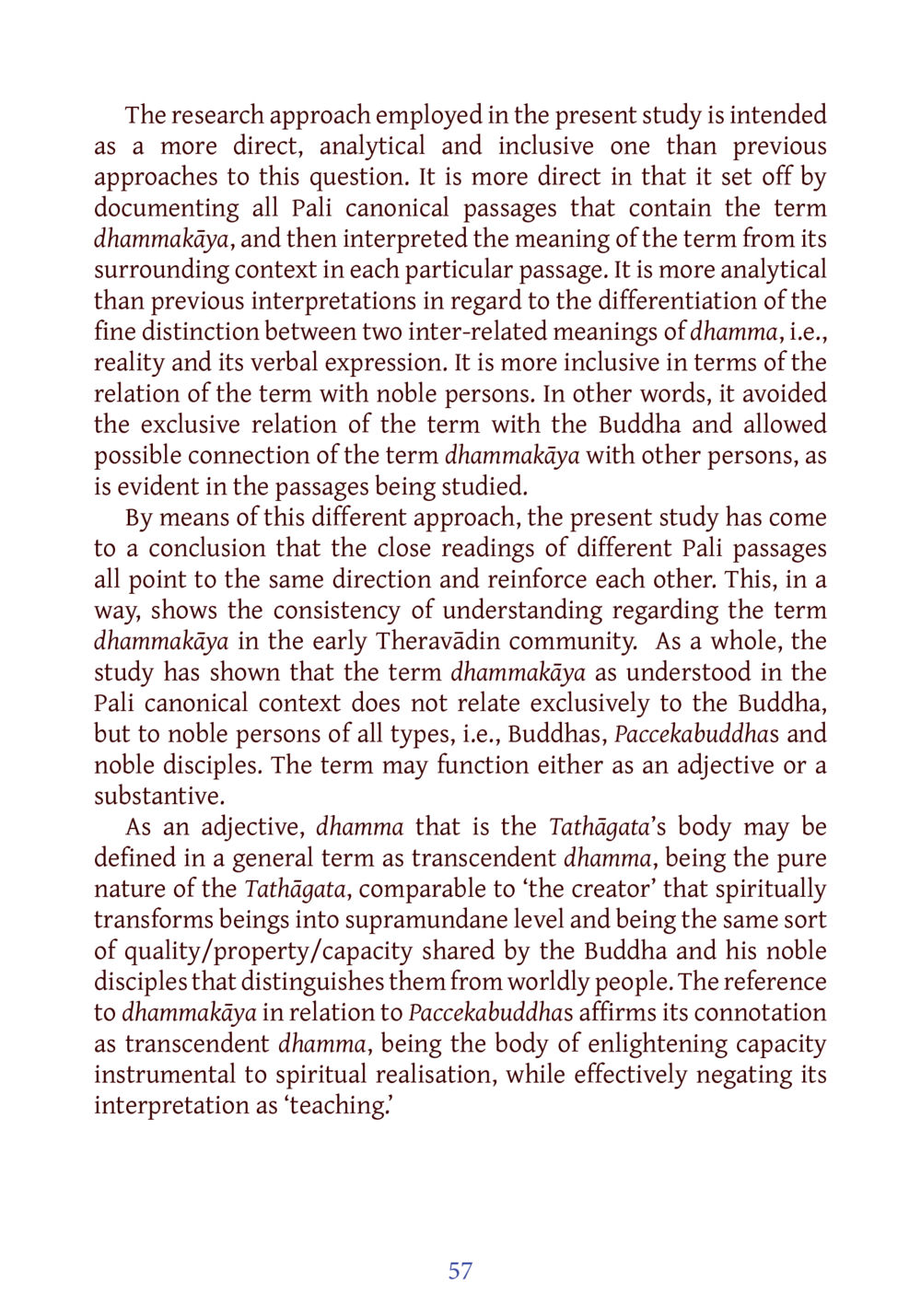Understanding Dhammakāya in Early Theravādin Context : หน้า 78/141
DIRI Journal : หน้า 78/141 An analytical approach to the term dhammakāya in Pali canon revealing its broader implications beyond the Buddha.
3 ครั้ง

สรุปเนื้อหา
This study analyzes the term dhammakāya through close readings of Pali canonical passages, revealing that it relates not only to the Buddha but also to other noble figures like Paccakabuddhas and disciples. The research emphasizes the nuanced meanings of dhamma as reality and verbal expression. It highlights the transcendent nature of the Tathāgata’s body and its role in spiritual realization, distancing it from a mere association with teaching. For further insights, visit dmc.tv.
หัวข้อประเด็น
-Analysis of dhammakāya
-Connection with noble persons
-Differentiation of dhamma meanings
-Role in Theravādin understanding
-Transcendent nature of dhamma
ข้อความต้นฉบับในหน้า
The research approach employed in the present study is intended as a more direct, analytical and inclusive one than previous approaches to this question. It is more direct in that it set off by documenting all Pali canonical passages that contain the term dhammakāya, and then interpreted the meaning of the term from its surrounding context in each particular passage. It is more analytical than previous interpretations in regard to the differentiation of the fine distinction between two inter-related meanings of dhamma, i.e., reality and its verbal expression. It is more inclusive in terms of the relation of the term with noble persons. In other words, it avoided the exclusive relation of the term with the Buddha and allowed possible connection of the term dhammakāya with other persons, as is evident in the passages being studied.
By means of this different approach, the present study has come to a conclusion that the close readings of different Pali passages all point to the same direction and reinforce each other. This, in a way, shows the consistency of understanding regarding the term dhammakāya in the early Theravādin community. As a whole, the study has shown that the term dhammakāya as understood in the Pali canonical context does not relate exclusively to the Buddha, but to noble persons of all types, i.e., Buddhas, Paccakabuddhas and noble disciplines. The term may function either as an adjective or a substantive.
As an adjective, dhamma that is the Tathāgata’s body may be defined in a general term as transcendent dhamma, being the pure nature of the Tathāgata, comparable to ‘the creator’ that spiritually transforms beings into supramundane level and being the same sort of quality/property/capacity shared by the Buddha and his noble disciples that distinguishes them from worldly people. The reference to dhammakāya in relation to Paccakabuddhas affirms its connotation as transcendent dhamma, being the body of enlightening capacity instrumental to spiritual realisation, while effectively negating its interpretation as ‘teaching.’
หน้าหนังสือทั้งหมด

1

2

3

4

5

6

7

8

9

10

11

12

13

14

15

16

17

18

19

20

21

22

23

24

25

26

27

28

29

30

31

32

33

34

35

36

37

38

39

40

41

42

43

44

45

46

47

48

49

50

51

52

53

54

55

56

57

58

59

60

61

62

63

64

65

66

67

68

69

70

71

72

73

74

75

76

77

78

79

80

81

82

83

84

85

86

87

88

89

90

91

92

93

94

95

96

97

98

99

100

101

102

103

104

105

106

107

108

109

110

111

112

113

114

115

116

117

118

119

120

121

122

123

124

125

126

127

128

129

130

131

132

133

134

135

136

137

138

139

140

141
หนังสือที่เกี่ยวข้อง
Load More
